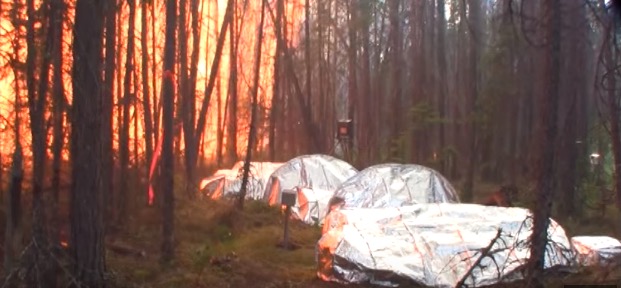
Since we last reported on the effort to develop a better fire shelter, additional tests have been carried out on some of the more promising materials.
The image above is from tests during actual forest fire conditions in June when NASA’s Langley Research Center, the University of Alberta, and the U.S. Forest Service travelled to Fort Providence in Canada’s Northwest Territories to conduct a series of controlled outdoor burns. More tests were held in September in a full-scale fire testing facility at the University of Alberta in Edmonton.
This is all part of a project that led to the creation of an organization, working with NASA and other organizations, called CHIEFS – Convective Heating Improvement for Emergency Fire Shelters – a team that is working to take its knowledge of heat-shield technology for space missions and use it to help improve fire shelter technology here on Earth.
A fire shelter is a folding pup tent like device that is intended to shield wildland firefighters from radiated and convected heat if they become trapped in a wildland fire. The U.S. Forest Service moved up their plans to improve the last-resort device after 19 firefighters were killed even after they deployed shelters on the Yarnell Hill Fire in 2013 south of Prescott, Arizona.
After the tragedy NASA got involved thinking that heat shields they had developed for space craft experiencing the heat of re-entry into the atmosphere might be useful in a new generation of fire shelters.
Mary Beth Wusk, a NASA integration manager in the Game Changing Development Program Office at Langley, said in the video below that the work she has done on this project has been the highlight of her career.
Thanks and a tip of the hat go out to Bean.
